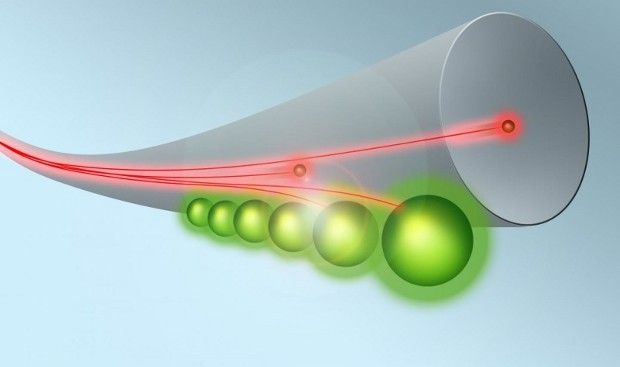Scientists at the Vienna University of Technology in Austria claim that, in a series of experiments performed in laboratory conditions, they managed to slow light to a speed of merely 180 kilometers per hour (112 miles per hour).
Just to put things into perspective, it must be said that, if left to its own devices, i.e. in vacuum, light moves at a mind-boggling 1,079,251,200 kilometers per hour (670,616,629 miles per hour), or 299,792 kilometers per second (186,282 miles per second).
The team, led by specialists C. Sayrin, C. Clausen, B. Albrecht, P. Schneeweiss, and A. Rauschenbeutel with the University's Vienna Center for Quantum Science and Technology, detail their work in a paper published in the journal Optica.
So, how did they do it?
In the report describing their experiments, the scientists explain that, to get light to slow to just 180 kilometers per hour (112 miles per hour), they basically coaxed it into interacting strongly with matter.
The researchers say that, as shown by previous investigations, mediums such as water or glass work to slow light ever so slightly because light cannot help but interact with the atoms that comprise them.
As part of their investigation, the Vienna University of Technology team had light move through glass fibers that had cesium atoms included in their makeup. The result was a strong interaction between light and matter.
Due to this interaction, the speed of light was dramatically reduced. In fact, the researchers say that the system they created even allowed them to force light to come to a standstill and then released it in a controlled way.
“In our system, this effect [light's habit of slowing down when moving through various mediums] is extreme, because we are creating an exceedingly strong interaction between light and matter,” said specialist A. Rauschenbeutel.
“The speed of light in our glass fiber is only 180 kilometers per hour. Any express train can top that,” the Vienna University of Technology scientist went on to comment on his and his colleagues' work, as cited by Science Daily.
Why try to slow light?
Scientists are now hard at work trying to figure out a way to use light instead of electrical signals to transmit data. They say that such a shift is sure to translate into the development of a new generation of super-fast electronics.
The thing is that, before they can use light to transmit data, researchers must figure out a way to control it. Getting it to move at a specific speed is just one of the prerequisites of using light to deliver data.
Interestingly, it was just a few weeks back that another team of researchers also working towards this goal showcased a honeycomb-like device designed to make light bend without compromising its integrity or intensity.

 14 DAY TRIAL //
14 DAY TRIAL // 

